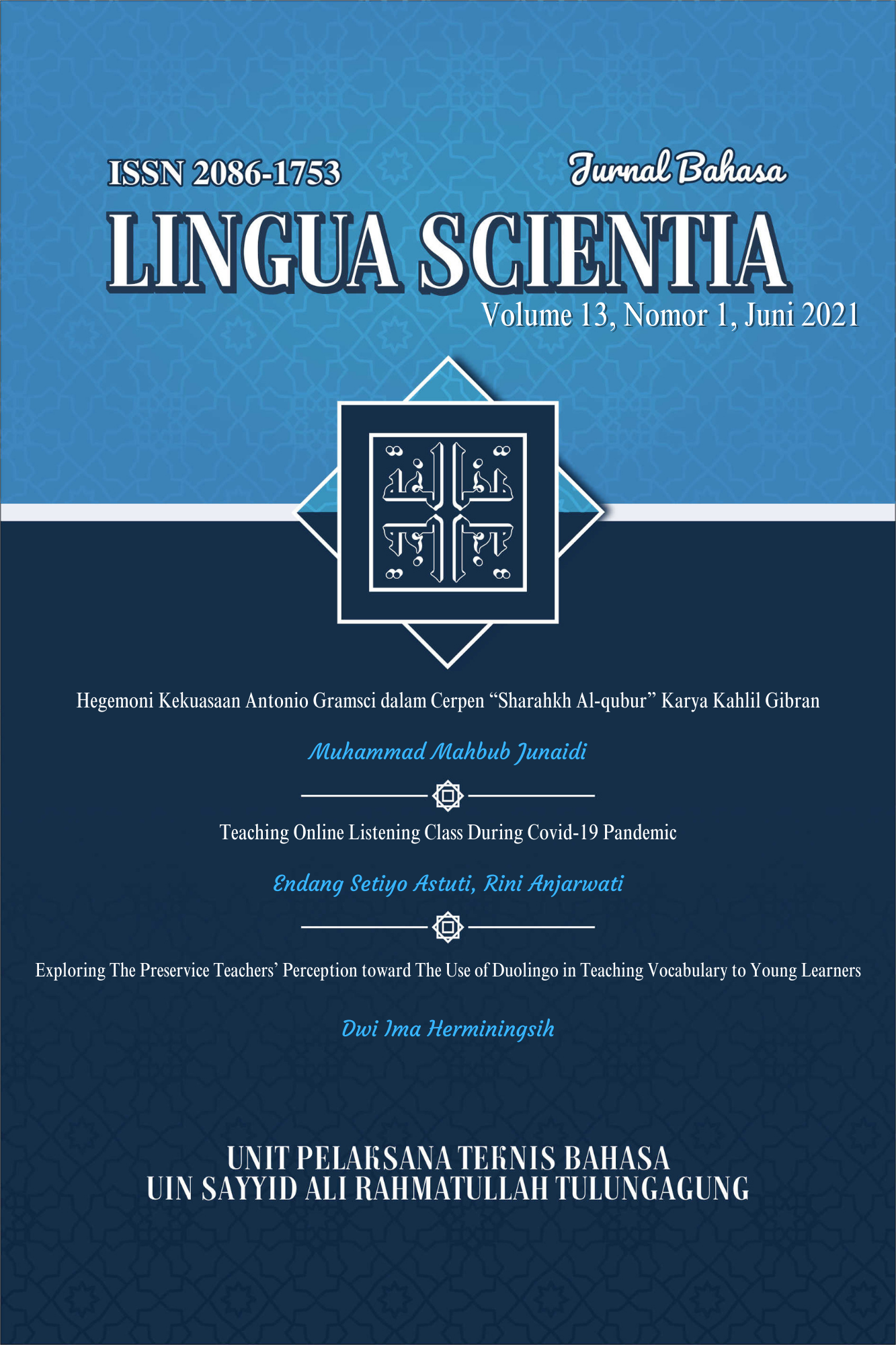TYPES OF FEEDBACK USED BY THE STUDENTS IN INTERMEDIATE WRITING CLASS
Abstract
Writing is the most complicated skill among other language skills. In the writing activity, the students have to invent ideas and organize them into sentences and paragraphs that will be clear for readers. Feedback is crucial to give significant improvement to student's writings. Peers and maybe various can provide feedback. This study's objective was to describe the types of feedback used by students of the Intermediate Writing Class in writing an argumentative paragraph. Descriptive qualitative was the design of research. The subjects of this research are A1 and A4 Intermediate Writing course students of the English language Education Study Program of Lambung Mangkurat University. The data were collected through observation and document analysis. The data were then analyzed through three steps: familiarizing and organizing, coding, and interpreting and representing. The result was found that the students used several feedback types, namely written feedback as responding and written feedback as correcting. Written feedback as correcting used by the students consists of direct feedback, metalinguistic feedback, and unfocused feedback. From some of the metalinguistic feedback that some students used, they were using the grammatical description. Some of the metalinguistic feedback that some students used was the metalinguistic explanation (grammatical description). There was no metalinguistic feedback of the error code. There was only one student who used unfocused feedback. In conclusion, the students used four feedback types: written feedback as responding, written feedback as correcting, or written corrective feedback consisting of direct feedback, metalinguistic feedback, and unfocused feedback. Written feedback as responding is the feedback that the students used most while doing peer feedback. The students need to look for more information and explanation or feedback from the teachers and their friends and give feedback while doing peer feedback properly to not only use one type of feedback.
Downloads
References
Al-Roomy, M. (2016). Developing students’ EFL writing skills by enhancing their oral interactions. International Journal of Applied Linguistics and English Literature, 5(5), 24–31. https://doi.org/10.7575/aiac.ijalel.v.5n.5p.24
Ary, C. K. S. D., Jacobs, L. C., & Asghar, R. (2010). Introduction to Research in Education (8th ed.). Nelson Education, Ltd.
Bijami, M., Kashef, S. H., & Nejad, M. S. (2013). Peer Feedback in Learning English Writing: Advantages and Disadvantages. Journal of Studies in Education, 3(4), 91. https://doi.org/10.5296/jse.v3i4.4314
Brookhart, S. M. (2017). Feedback: The Long View— Does Feedback Improve Learning? In How to Give Effective Feedback To Your Students (2nd ed., pp. 1–27). ASCD. https://lccn.loc.gov/2016045329
Coulmas, F. (2003). Writing System an Introduction to Their Linguistic Analysis. Cambridge University Press.
Ellis, R. (2008). A Typology of Written Corrective Feedback Types. ELT Journal, 63(2), 97–107. https://doi.org/10.1093/elt/ccn023
Ellis, R. (2009). Corrective Feedback and Teacher Development. L2 Journal, 1(1), 3–18. https://doi.org/10.5070/l2.v1i1.9054
Fatimah, S., & Suharto, G. (2017). Using Peer Feedback Technique to Improve Students’ Writing Skills: A Quasi-Experimental Study Among Secondary Students. Journal of English Language and Language Teaching (JELLT), 1(2), 40–48.
Harmer, J. (2004). How to Teach Writing. Pearson Education Limited.
Harmer, J. (2007). How to Teach English (2nd ed.). Pearson Education Limited.
Ho, P. V. P., & Duong, N. T. T. (2014). The Effectiveness of Peer Feedback on Graduate Academic Writing at Ho Chi Minh City Open University. Journal of Science Ho Chi Minh City Open University, 2(10), 35–48.
John, L. (2008). College Writing Skills with Readings (7th ed.). McGraw-Hill Companies.
Nation, I. S. P. (2009). Teaching ESL/EFL Reading and Writing (ESL & Applied Linguistics Professional Series). http://www.amazon.com/Teaching-Reading-Writing-Linguistics-Professional/dp/041598968X
Paulus, T. M. (1999). The Effect of Peer and Teacher Feedback on Student Writing. Journal of Second Language Writing, 8(3), 265–289. https://doi.org/10.1016/S1060-3743(99)80117-9
Pirhonen, N. (2016). Students’ Perception about the Use of Oral Feedback in EFL Classrooms (Issue May). University of Jyväskylä.
Pramudita, A. S. E. (2017). Types of Peer Feedback Used by The Students in a Paragraph Writing Class. Sanata Dharma.
Rezazadeh, S., Ashrafi, S., & Foozunfar, M. (2018). The Effects of Oral, Written Feedback Types on EFL learners’ Written Accuracy: The Relevance of Learners’ Perceptions. Proceedings of the 2nd National Conference on English Language Studies: Applied Linguistics Perspectives on EFL, May, 2–20.
Sembiring, G. S. B. (2017). Students’ Responses to Peer Feedback on Written Recount Texts in English Class at SMK 1 Cangkringan. Sanata Dharma.
Surakka, K. (2007). Corrective Feedback and Learner Uptake in a Classroom. University of Jyväskylä.
Yusof, J., Manan, N. A. A., & Alias, A. A. (2012). Guided Peer Feedback on Academic Writing Tasks using Facebook Notes: An Exploratory Study. Procedia - Social and Behavioral Sciences, 67, 216–228. https://doi.org/10.1016/j.sbspro.2012.11.324
Copyright (c) 2021 Rina Listia, Hendra Alamsyah, Fatchul Mu'in

This work is licensed under a Creative Commons Attribution-NonCommercial 4.0 International License.
Before going to review process, all manuscripts will be checked that they are free from plagiarism practice using "Turnitin" software. If there is an indication of plagiarism, the manuscript will instantly be rejected.


